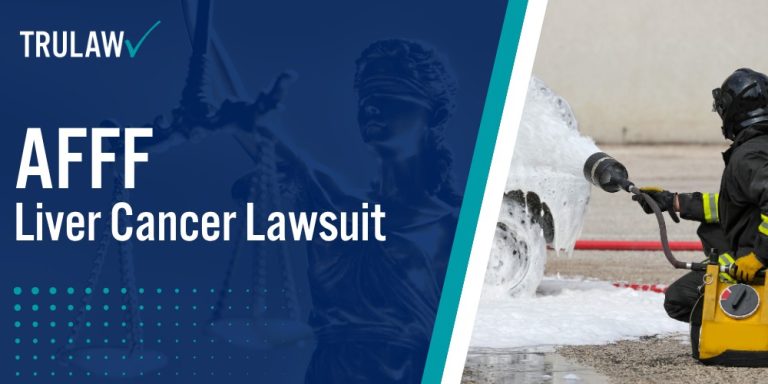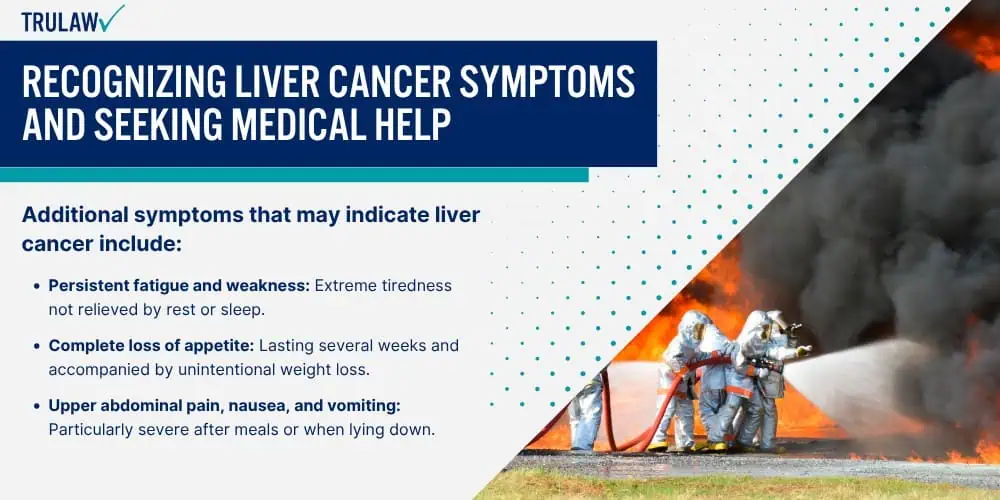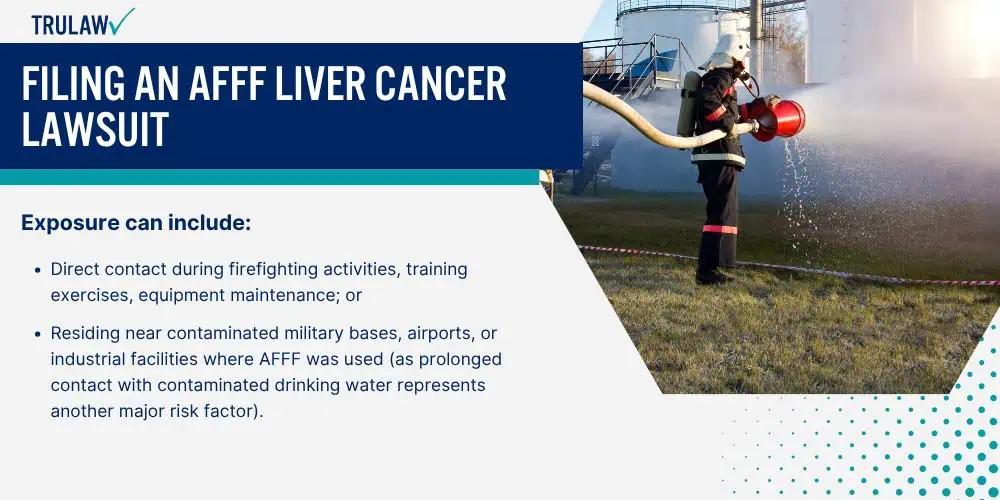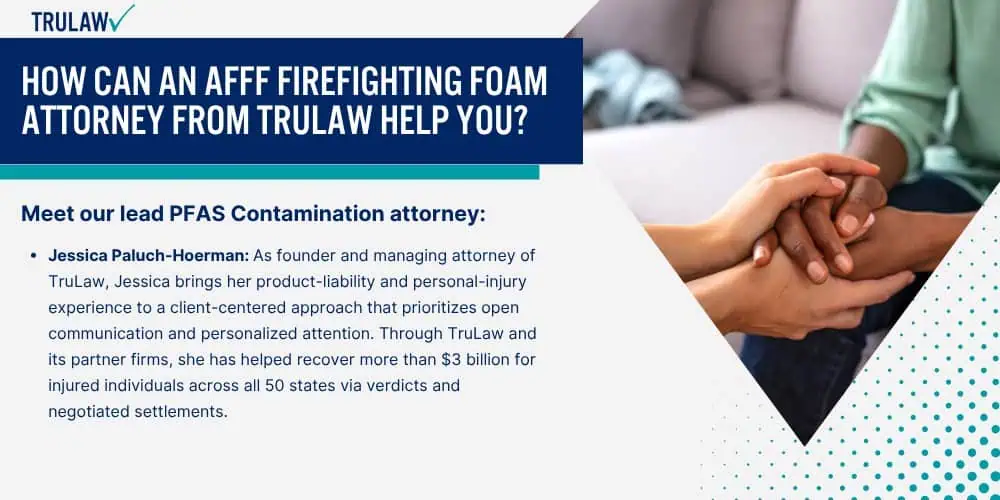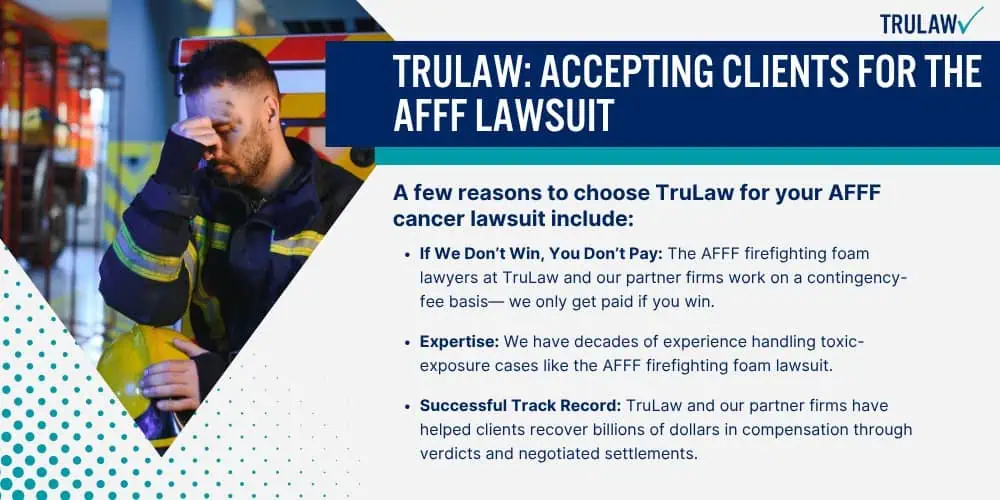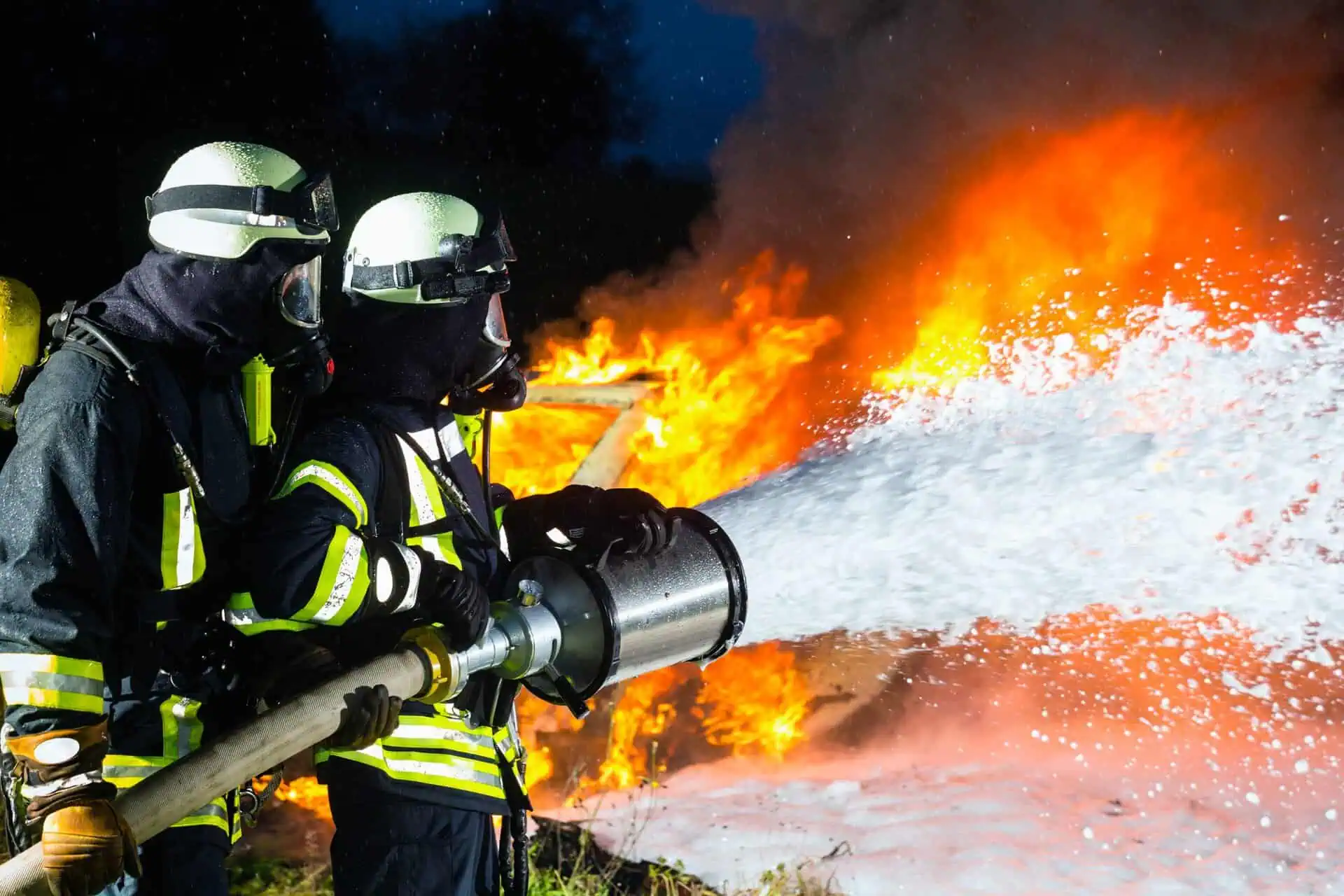Aqueous Film-Forming Foam (AFFF) has been the standard firefighting tool for military bases, airports, and fire departments since the 1960s, containing synthetic chemicals called PFAS that are now scientifically linked to liver cancer through multiple peer-reviewed studies.
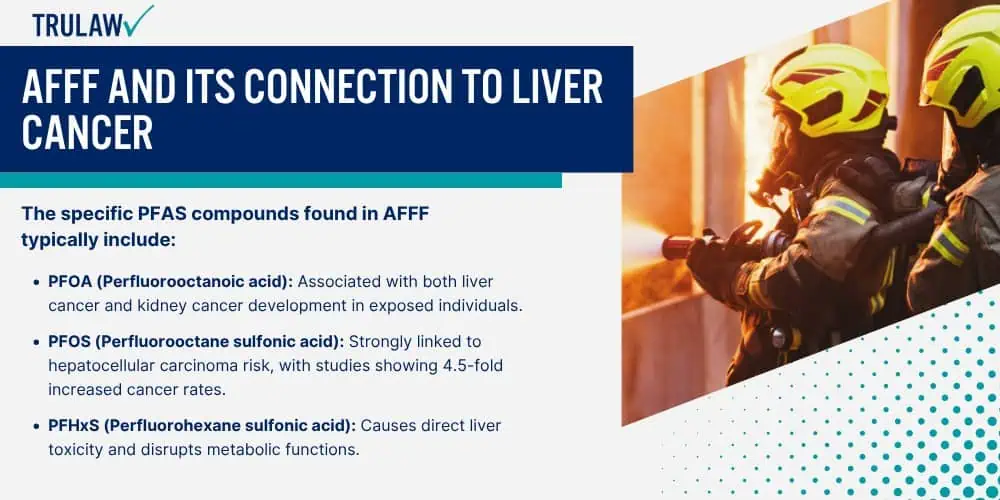
Recent research from the University of Southern California demonstrates that individuals with high levels of PFOS (a key PFAS component in AFFF) face a 4.5-fold increased risk of developing hepatocellular carcinoma, the most common form of liver cancer, findings supported by ongoing National Cancer Institute research into PFAS cancer risks.
The National Cancer Institute (NCI) and Environmental Protection Agency have both issued warnings about the cancer-causing potential of these “forever chemicals” that accumulate in human bodies over decades of exposure.
What Makes AFFF Dangerous to Human Health
PFAS chemicals are known as “forever chemicals” because they don’t break down naturally in the environment or human body, accumulating over decades of exposure and causing long-term health damage.
These synthetic compounds include perfluorooctanoic acid (PFOA) and perfluorooctane sulfonic acid (PFOS), which are the primary toxic components found in firefighting foam products used by firefighters and military personnel.
The specific PFAS compounds found in AFFF typically include:
- PFOA (Perfluorooctanoic acid): Associated with both liver cancer and kidney cancer development in exposed individuals.
- PFOS (Perfluorooctane sulfonic acid): Strongly linked to hepatocellular carcinoma risk, with studies showing 4.5-fold increased cancer rates.
- PFHxS (Perfluorohexane sulfonic acid): Causes direct liver toxicity and disrupts metabolic functions.
- PFNA (Perfluorononanoic acid): Connected to elevated liver enzyme levels indicating hepatic damage.
- PFBS (Perfluorobutane sulfonic acid): Contributes to chronic liver inflammation and cellular stress.
These chemicals damage liver cells through oxidative stress and inflammation, with the Environmental Protection Agency (EPA) and CDC issuing specific warnings about PFAS toxicity levels exceeding safe exposure limits in firefighting personnel.
The liver’s role in filtering toxins makes it particularly vulnerable to PFAS accumulation, leading to cellular damage that can progress to cancerous tumors over time.
Scientific Evidence Linking AFFF to Liver Cancer
The landmark University of Southern California study published in JHEP Reports found that individuals with PFOS blood levels at the 90th percentile (above 55 μg/L) had a 4.5-fold increased risk to develop hepatocellular carcinoma compared to those with lower exposure levels.
This groundbreaking research examined blood samples from a multiethnic cohort and used advanced metabolomics to identify the biological pathways through which PFAS chemicals cause liver cancer.
The types of liver cancer linked to exposure to PFAS include, but are not limited to:
- Hepatocellular carcinoma (HCC): The most common primary liver cancer, accounting for approximately 75% of cases.
- Cholangiocarcinoma: Bile duct cancer specifically associated with long-term PFAS exposure.
- Non-viral hepatocellular carcinoma: Liver cancer developing without hepatitis infection as a contributing factor.
- Liver metastases: Secondary cancers that spread to liver tissue from other primary sites.
The connection between PFAS and non-alcoholic fatty liver disease (NAFLD) serves as a precursor to liver cancer, with CDC/ATSDR documenting various health effects showing that PFAS exposure increases NAFLD risk by up to 73% in heavily exposed individuals.
This progression from fatty liver disease to cirrhosis and eventually to liver cancer represents a well-documented pathway that affects thousands of firefighters and military personnel exposed to AFFF.
Recent studies have also identified links between PFAS exposure and other cancers, including testicular cancer, prostate cancer, and thyroid cancer, demonstrating the widespread carcinogenic effects of these chemicals beyond just liver tissue.
Who Faces the Highest Risk of AFFF-Related Liver Cancer
Military personnel, civilian firefighters, airport workers, and industrial facility workers face the highest risk of AFFF-related liver cancer due to repeated occupational exposure during training exercises, emergency responses, and equipment maintenance.
Veterans who served at military installations between 1970 and 2024 experienced particularly intense levels from prolonged exposure to AFFF (as AFFF was routinely used in training exercises without proper protective equipment or health warnings).
The specific exposure scenarios that increase liver cancer risk frequently consist of:
- Military firefighting training exercises: Direct contact with AFFF foam during repeated training drills without protective equipment.
- Emergency response activities: Active firefighting at airports and military bases involving concentrated AFFF deployment.
- Equipment testing and maintenance: Regular handling of AFFF systems during routine inspections and repairs.
- Base housing contamination: Living in military housing near PFAS-contaminated groundwater sources.
- Industrial facility exposure: Working at facilities using PFAS-containing fire suppression systems.
- Cleanup and remediation work: Direct contact during PFAS-contaminated site cleanup operations.
Veterans face particularly elevated exposure levels from years of repeated contact during training exercises firefighters conducted at military installations with documented PFAS contamination, including Camp Lejeune, Dover Air Force Base, and hundreds of other facilities where groundwater contamination exceeds EPA safety limits.
The Department of Defense has acknowledged PFAS contamination at military installations and is working to phase out AFFF use.
If you or a loved one developed liver cancer after exposure to AFFF firefighting foam, you may be eligible to seek compensation.
Contact TruLaw using the chat on this page to receive an instant case evaluation and determine whether you qualify to join others in filing an AFFF Lawsuit today.
